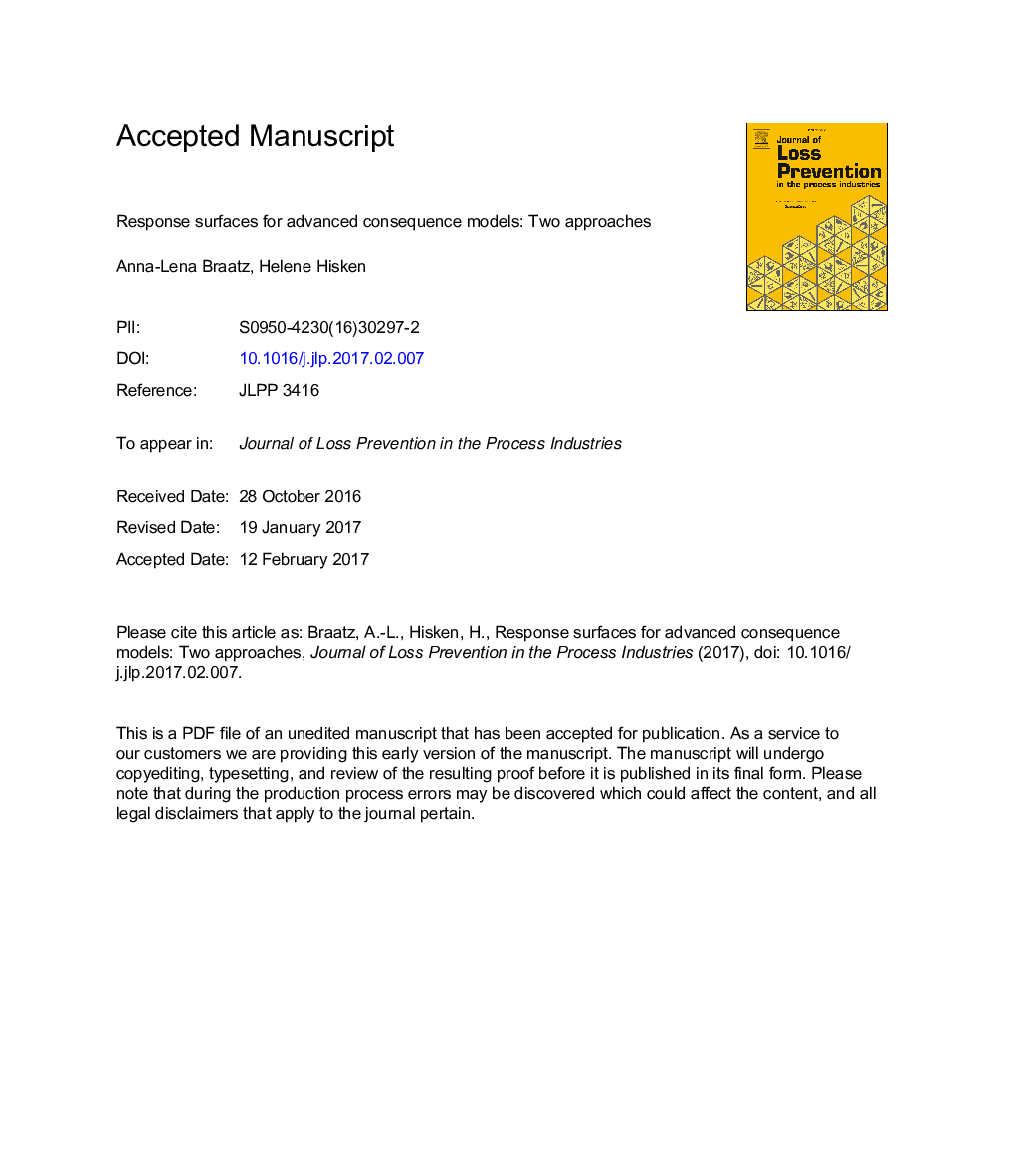| Article ID | Journal | Published Year | Pages | File Type |
|---|---|---|---|---|
| 4980267 | Journal of Loss Prevention in the Process Industries | 2017 | 42 Pages |
Abstract
This paper reports the approximation quality of response surfaces as metamodels for key results from computational fluid dynamics (CFD) gas explosion simulations. The response surfaces constitute smooth approximations to variations in the CFD output with respect to perturbing empirically determined sub-grid model parameters. Two response surface approaches are tested - polynomial response surfaces (PRSs) created from Taylor polynomials via finite differences of the model output, and response surfaces based on neural networks (RSNNs) generated on the basis of Latin hypercube samplings. First, results for selected examples of medium- and large-scale gas explosions are presented in detail. It was found that in order to achieve the same approximation quality with RSNNs as with PRSs, a higher number of simulations may be required. However, in contrast to the polynomial approach, the number of simulations required for an RSNN can be adapted to the non-linearity of the model output. For the scenarios for which a PRS approximates the model output poorly, an RSNN built from an increased number of simulations is found to yield a significantly more reliable approximation. Second, the paper investigates the general applicability of the RSNNs for industrial-scale gas explosion simulations. Based on the results from the detailed analysis, the extended analysis is only conducted for the RSNN approach, including 37 experiments from 5 experimental campaigns commonly used for model validation.
Related Topics
Physical Sciences and Engineering
Chemical Engineering
Chemical Health and Safety
Authors
Anna-Lena Braatz, Helene Hisken,
